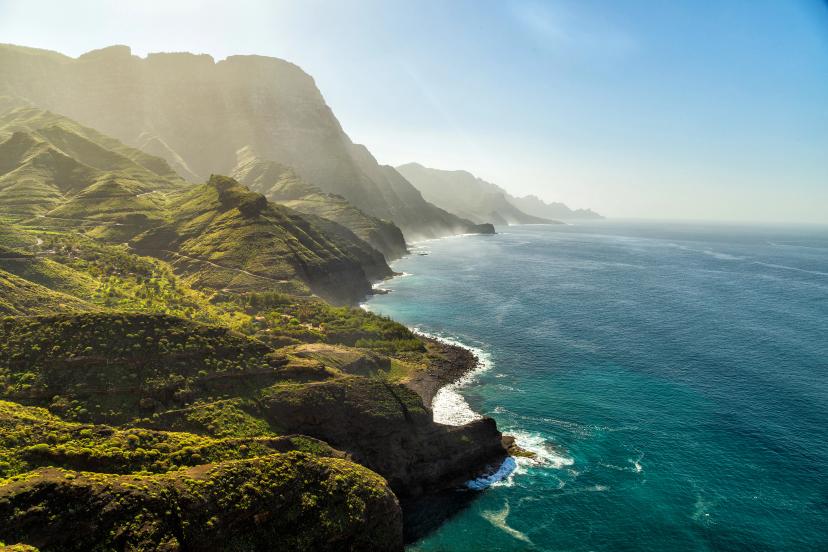A complete guide to cycling the Canary Islands — covering when to go, where to ride, iconic climbs, practical tips, and everything you need to plan your trip with confidence.
A complete guide to cycling the Canary Islands — when to go, where to ride, iconic climbs, practical tips, and everything else you need to know.
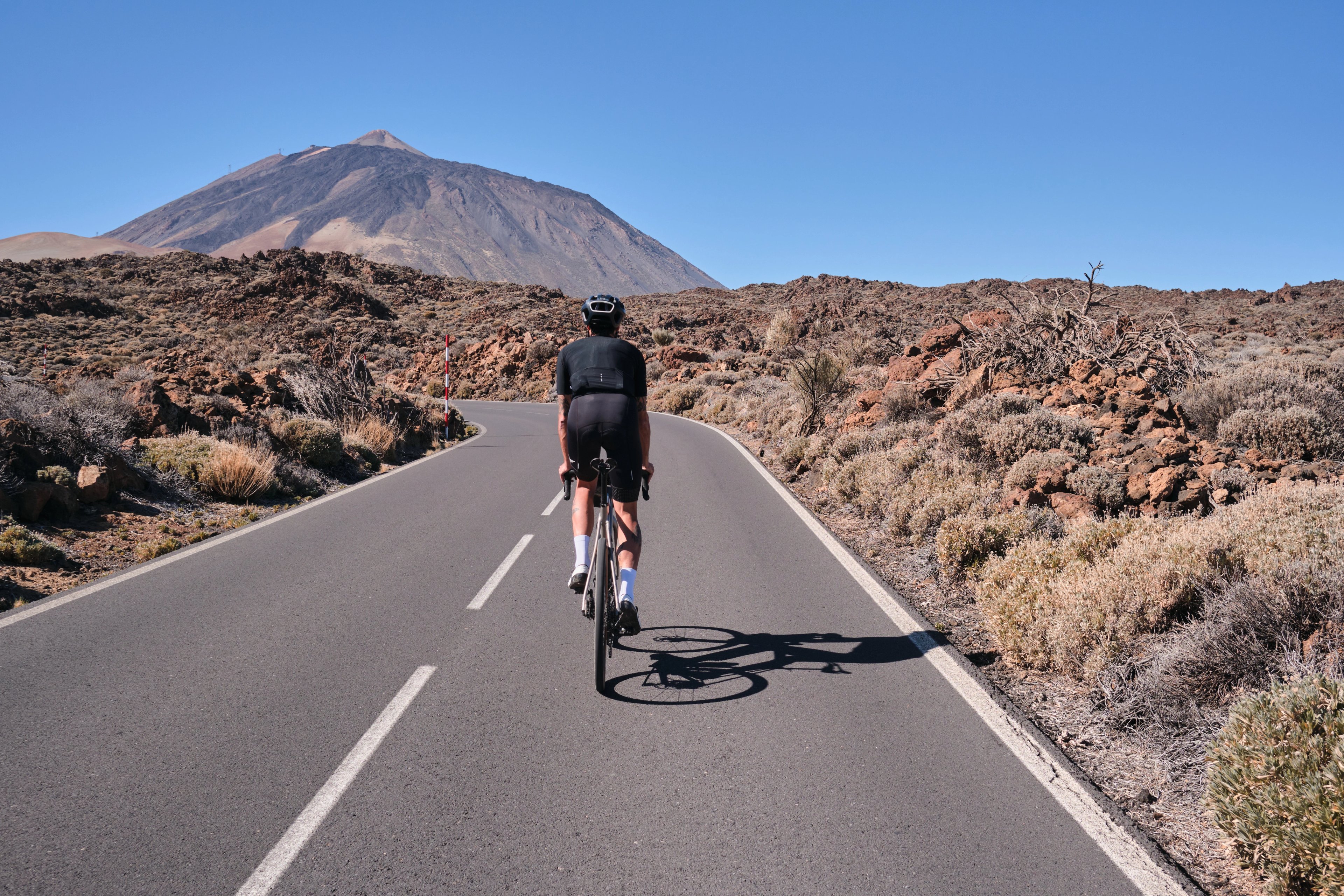
Quick Links
The Canary Islands are a Spanish archipelago located off the northwest coast of Africa.
Known for their year-round mild climate, volcanic landscapes, and excellent tourism infrastructure, they offer some of the most reliable cycling conditions in Europe.
In this guide, you’ll find:
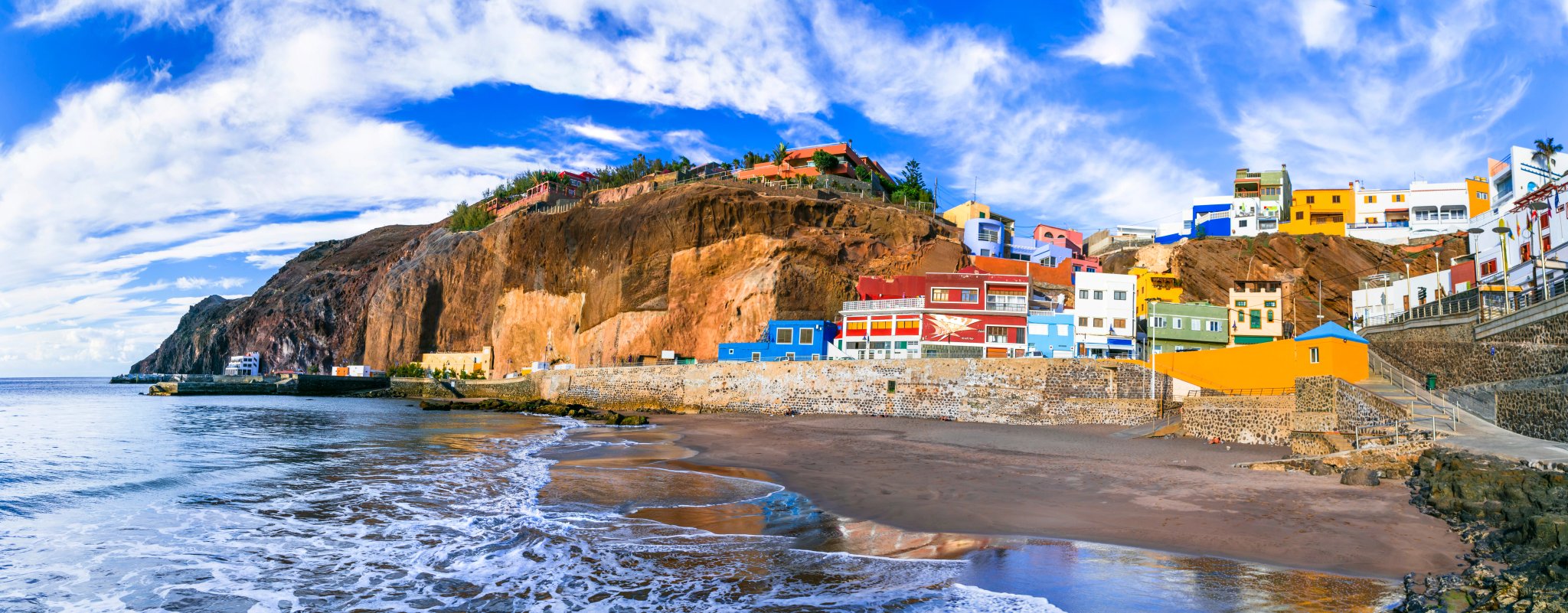
General Overview of the Islands
Location
The Canary Islands lie in the Atlantic Ocean, southwest of mainland Spain and just off the coast of Morocco. The archipelago consists of seven main islands:
Tenerife (skip to Tenerife section)
Gran Canaria (skip to Gran Canaroa section)
Lanzarote (skip to Lanzarote section)
Fuerteventura,
La Palma,
La Gomera, and
El Hierro.

Landscape
All Canary Islands are volcanic in origin. Their terrain ranges from dramatic lava fields and arid coastal plains to deep ravines, fertile valleys, and high mountains such as Tenerife’s Mount Teide. This variety creates highly diverse cycling conditions, sometimes changing dramatically within a single ride.

Why Cycle Canary Islands?
The Canary Islands are one of Europe’s most reliable and versatile cycling destinations. With warm temperatures throughout the year, excellent road quality, and a landscape shaped by volcanoes, they offer conditions that appeal to both leisure cyclists and experienced riders looking for challenging climbs.
What makes them stand out:
1. Year-Round Cycling Weather
The islands are known for their “eternal spring” climate. Winters remain mild and dry, summers are warm but moderated by Atlantic breezes, and higher elevations provide cooler air even in hotter months. This stability makes the Canary Islands one of the few destinations in Europe where cyclists can plan a trip in any season without worrying about harsh weather.
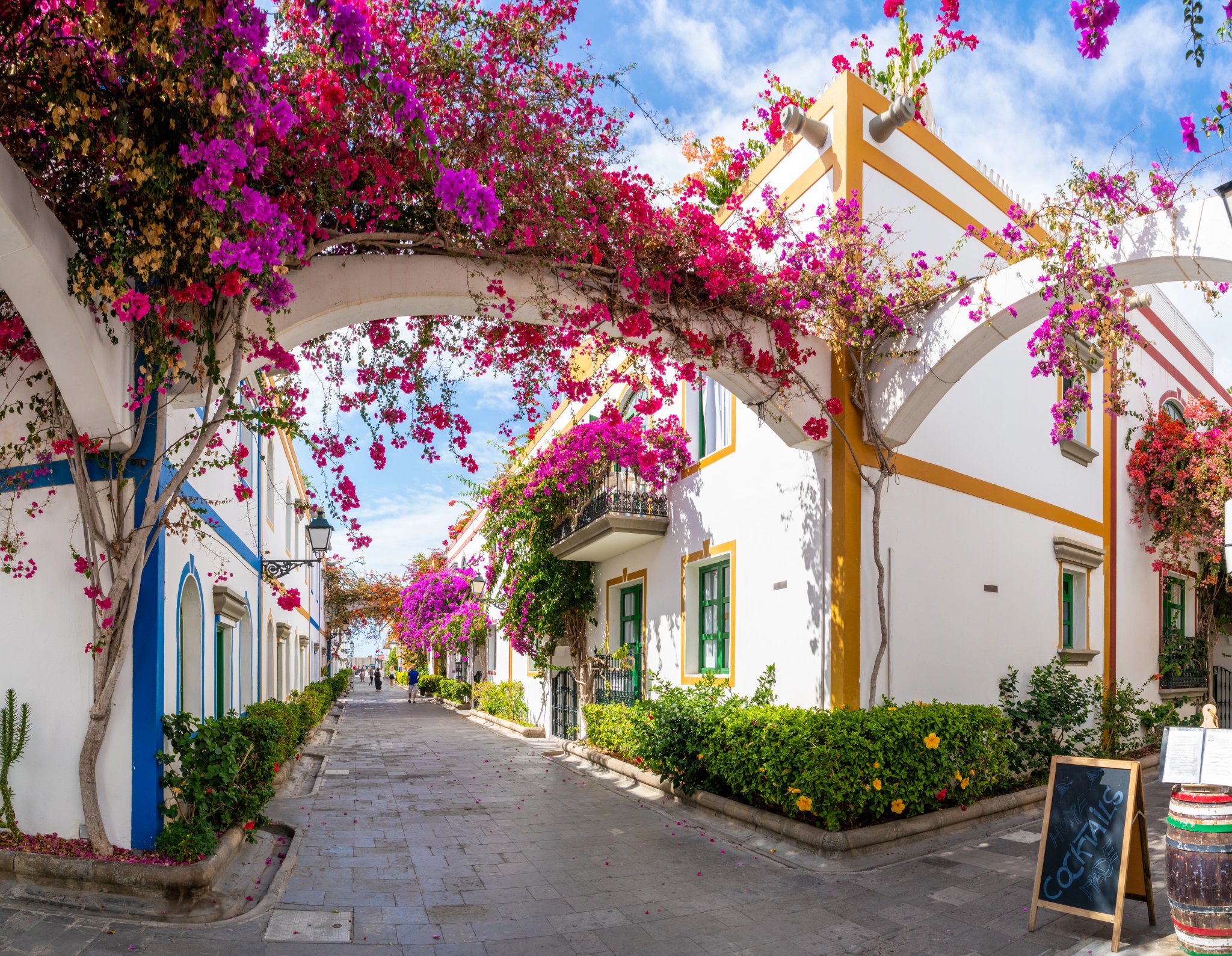
2. Excellent Road Conditions
Roads on the main cycling islands are generally smooth, well-maintained, and clearly marked. Many routes pass through quiet mountain interiors with minimal traffic, while coastal roads offer accessible rolling terrain for easier days. The overall infrastructure is cyclist-friendly and reliable.
3. Diverse Terrain in a Compact Area
The islands offer an impressive amount of variety within short distances. Riders can move from coastal flats to long gradual climbs, steep mountain ascents, volcanic plateaus, and rolling inland landscapes in a single trip. This diversity makes the Canary Islands suitable for both structured training and relaxed cycling holidays.
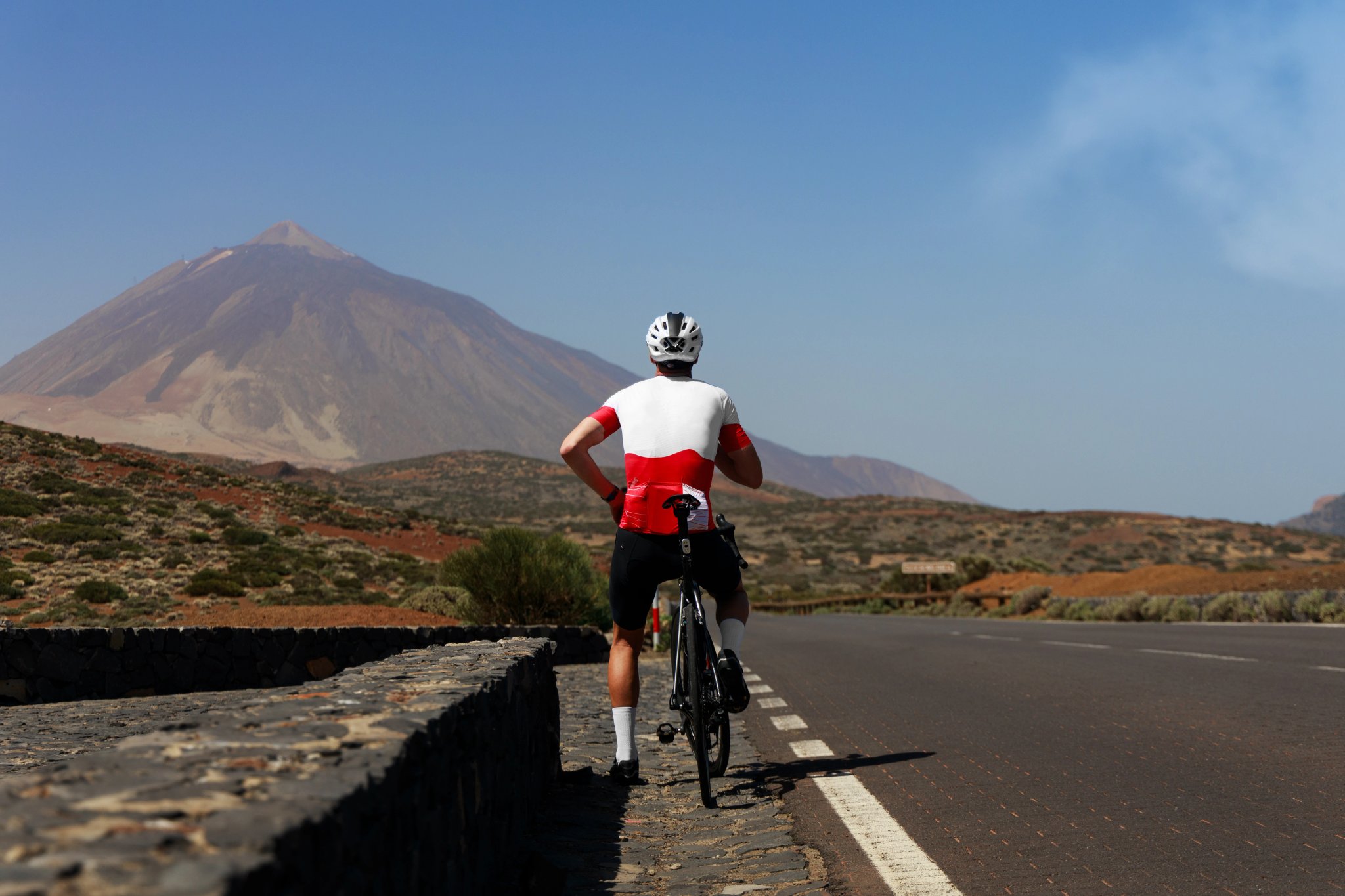
4. Iconic Climbs
The archipelago is home to several major European climbs, including:
Mount Teide (Tenerife) – one of the world’s longest continuous ascents, rising from sea level to over 2,000 m.
Pico de las Nieves (Gran Canaria) – a demanding high-mountain climb with spectacular views.
Timanfaya National Park (Lanzarote) – a unique ride through lava fields and volcanic formations.
5. Strong Cycling Infrastructure
Cycling services are widely available, including high-quality bike rental shops, experienced mechanics, guided rides, training camps, and bike-friendly accommodation. On most popular routes, cafés and rest stops are easy to find, making the islands accessible even for those who prefer not to travel with their own bike.
6. Striking Scenery
Riding in the Canary Islands means constant visual contrast—lava fields, pine forests, rugged cliffs, deep ravines, whitewashed villages, and sweeping Atlantic views. The scenery adds to the experience and makes every route feel varied and rewarding.
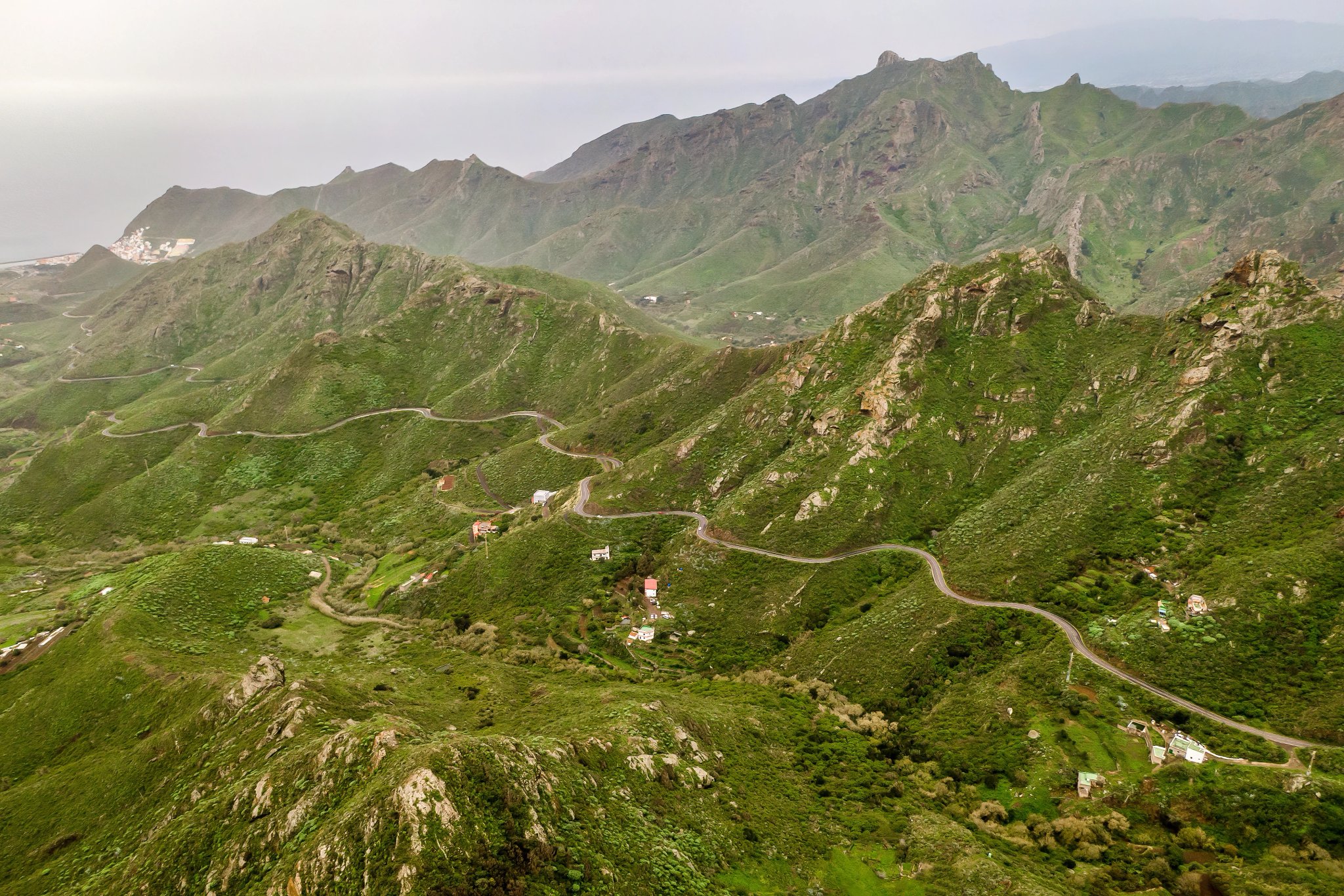
Best Time to Go
The Canary Islands offer rideable conditions all year, but each season has its own character.
In short:
March–June: Optimal cycling weather across all islands
July–August: Hotter—ride early or stay high/coastal
September–October: Warm, reliable, and quieter
November–February: Mild winter sunshine, best for coastal and mid-altitude routes
Below is an overview of what to expect in each season so you can plan your trip with confidence.
Spring (March–May)
Spring is one of the best times to cycle the islands. The weather is warm but comfortable, daylight is longer, and traffic is moderate.
Temperatures: ~16–24 °C
Best for: All cyclists
Why ride in spring: Ideal temperatures, excellent visibility, balanced conditions for both coastal and inland rides
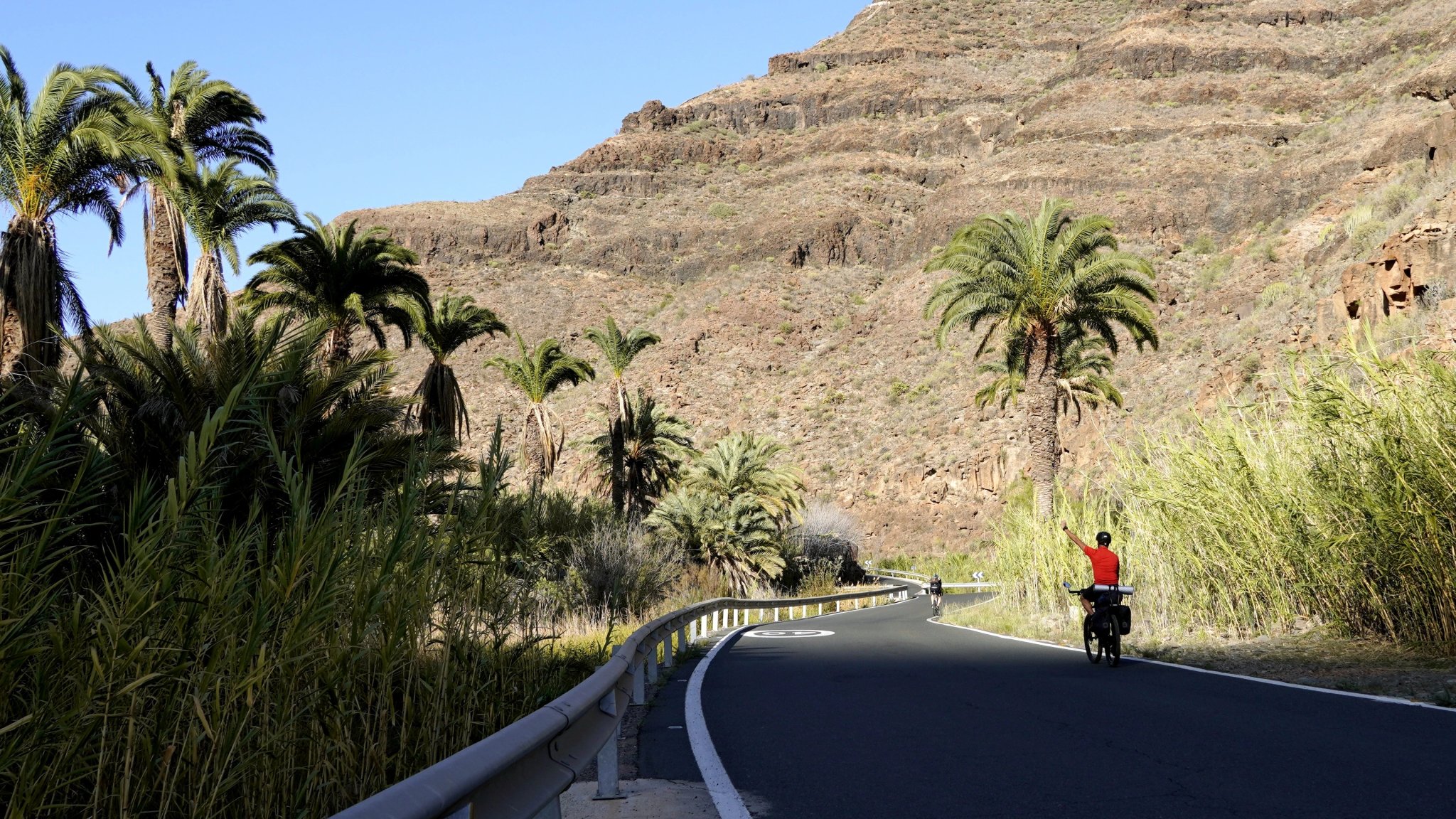
Summer (June–August)
Summer brings higher temperatures and stronger sun exposure, particularly in exposed areas like Lanzarote.
Temperatures: ~28–36 °C in low or inland zones
Best for: Early-morning rides and coastal routes
Good to know: Start early to avoid midday heat; high-altitude routes in Tenerife and Gran Canaria remain cooler

Autumn (September–November)
Autumn is warm, stable, and less crowded, making it a favourite season for multi-day tours.
Temperatures: ~22–28 °C early; 15–20 °C at altitude by November
Best for: Comfortable long days and quieter roads
Why ride in autumn: Warm but manageable conditions and excellent visibility

Winter (December–February)
Winter is a major advantage for the Canary Islands — ideal for escaping cold European weather.
Temperatures: ~12–18 °C on the coast; colder in the mountains
Best for: Winter sun cycling and training camps
Good to know: Mild, dependable weather; shorter days but consistently rideable conditions
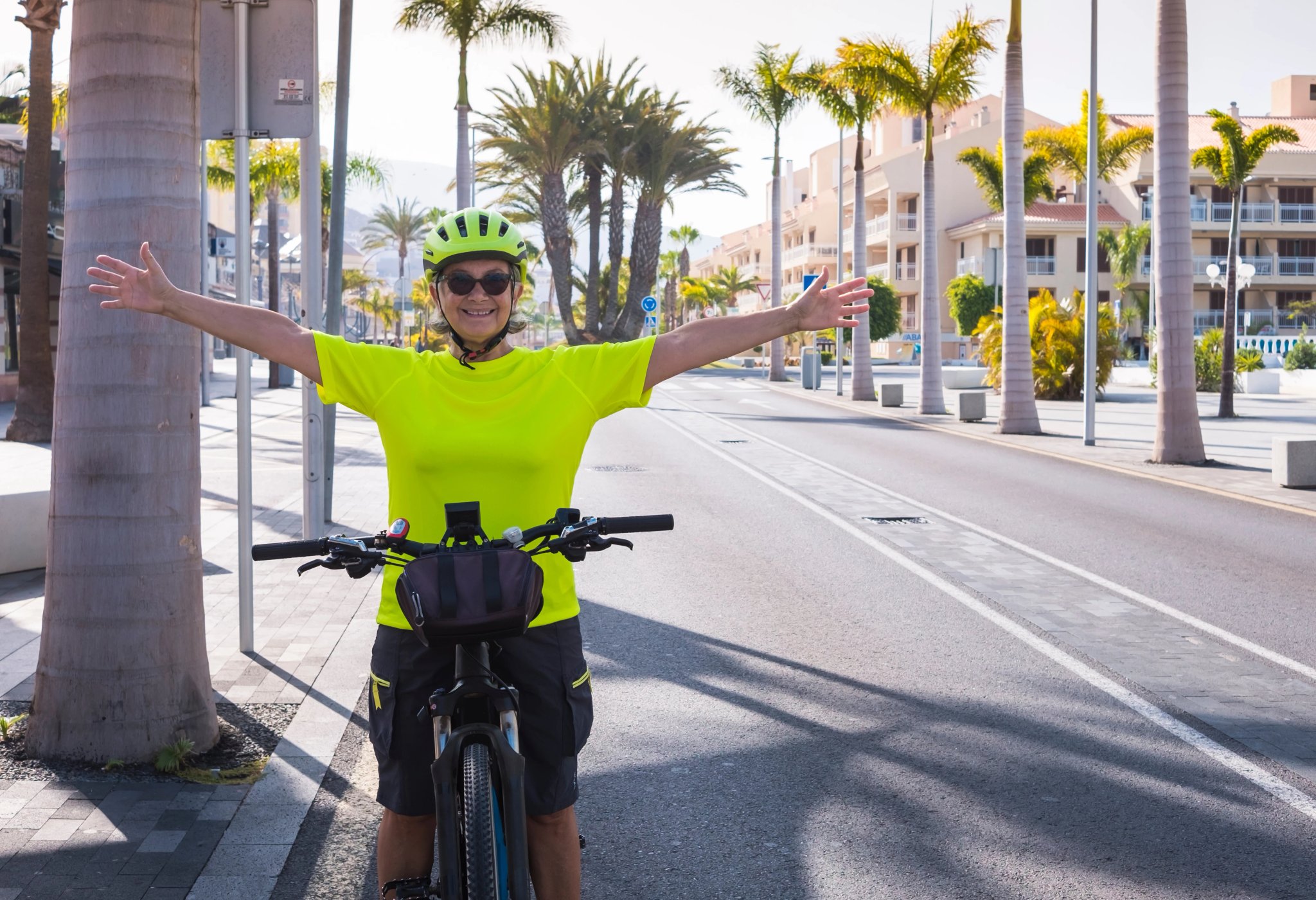
Top Islands for Cycling
The Canary Islands offer a range of cycling experiences, but Gran Canaria, Lanzarote, and Tenerife stand out as the three most established and rewarding destinations for road cyclists.
These islands combine excellent road networks, iconic climbs, reliable weather, and diverse landscapes — making them the clear top choices for most riders planning a cycling holiday.
Below, we provide an in-depth look at each island, including:
What makes it unique as a cycling destination
Essential routes and signature climbs
Sample itineraries
Practical information for planning your trip
This will help you understand the strengths of each island and decide which destination best matches your riding style and expectations.

Gran Canaria
Overview
Gran Canaria is the third-largest island in the Canary Islands, covering 1,560 km², roughly twice the size of Lanzarote. It has a population of around 860,000 people, most of whom live along the northeast coast and in the island’s capital, Las Palmas de Gran Canaria.

The island is often called a “miniature continent” thanks to its dramatic contrasts: sandy dunes in the south, steep ravines and pine forests in the interior, fertile northern valleys, and a mountainous core that rises to nearly 2,000 m.

Gran Canaria packs in more terrain than you’d expect
Gran Canaria stands out because of its:
Major elevation gain and long, sustained climbs
Quiet mountain roads cutting through dramatic ravines
Consistent year-round weather
Challenging routes suited for intermediate and advanced cyclists
The island’s most iconic ascent, Pico de las Nieves, climbs above 1,900 m and is considered one of the best road cycling climbs in Spain. Combined with smaller passes and coastal routes, Gran Canaria offers an exceptionally diverse and demanding week of riding.

Cycling Conditions
Gran Canaria’s road network is known for smooth tarmac, steep gradients, and spectacular mountain infrastructure. Many cycling routes wind through remote ravines and high-altitude plateaus, so expect dramatic scenery and a strong training load.
Traffic Levels
Traffic is moderate to low on most cycling roads, especially in the central and western parts of the island. The busiest areas are around Las Palmas, Maspalomas, and the resort zones along the south coast — but once you climb inland, the roads become noticeably quieter.
Terrain Characteristics
Gran Canaria is one of the most mountainous islands in Spain. Cyclists can expect:
Long climbs (20–45 km depending on route)
Steep gradients, often between 7–12%
Technical descents with hairpins and narrow sections
Multiple microclimates, from warm coasts to cool high-altitude forests
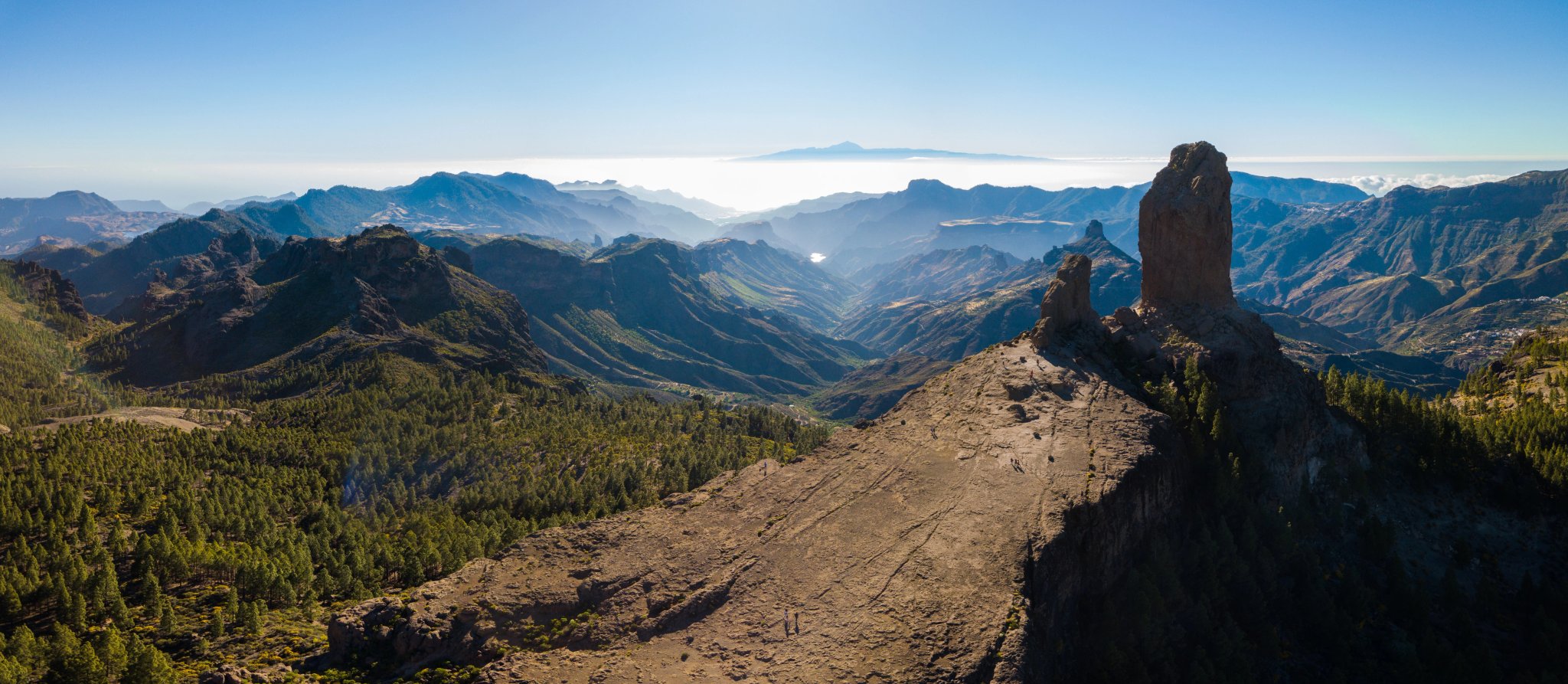
It is a climber’s island, best suited for riders who enjoy challenging elevation and dramatic mountain scenery.
Wind & Weather
The south is generally sunny and dry, while the north can be more humid and greener.
Higher elevations can be noticeably cooler, especially in winter months, and cloud cover may form around the mountain peaks. Winds are less extreme than in Lanzarote but still present on exposed ridgelines.

Best Base Towns
Maspalomas / Playa del Inglés: The most popular base for cyclists. Easy access to major climbs like Pico de las Nieves, Fataga, and Ayagaures. Plenty of hotels, bike shops, and flat coastal stretches for warm-up rides.
Puerto de Mogán: A quieter fishing village on the southwest coast, ideal for riders who prefer peaceful evenings and quick access to stunning coastal climbs and remote mountain roads.
Las Palmas de Gran Canaria: The island’s capital offers an urban base with good facilities and access to northern routes. Best for riders combining cycling with city activities or shorter stays.

Must-See Places
Gran Canaria offers more than great cycling. The island is full of dramatic viewpoints, historic villages, and unique natural landmarks that are easy to visit during rides or on rest days. Here are the key places worth seeing to round out your cycling trip.
Suggested Itinerary
Below is a sample one-week cycling itinerary that covers Gran Canaria’s essential mountain climbs, coastal routes, and interior ravines.
Itinerary
Day 1: Arrival in Maspalomas
Day 2: Maspalomas → Fataga → San Bartolomé
Day 3: San Bartolomé → Pico de las Nieves → Cruz de Tejeda
Day 4: Cruz de Tejeda Loop
Day 5: Cruz de Tejeda → Puerto de Mogán
Day 6: Puerto de Mogán Loop
Day 7: Puerto de Mogán → Maspalomas
Day 8: Departure from Gran Canaria
Wish to experience Gran Canaria with all logistics taken care of?
You can ride independently while we handle route planning, luggage transfers, accommodation, and on-trip support.
Check out this tour:
Tenerife
Overview
Tenerife is the largest island in the Canary Islands, covering 2,034 km² and home to around 950,000 people, with most residents concentrated around Santa Cruz and La Laguna in the northeast.

The island is dominated by Mount Teide, Spain’s highest peak at 3,715 m, which shapes both the climate and the cycling conditions across the island.
Tenerife is one of Europe’s most versatile cycling destinations, offering world-class road cycling, exceptional mountain biking, and year-round perfect weather.

Tenerife is where pros come to train for a reason
Tenerife stands out for:
Mount Teide, one of the world’s longest continuous road climbs
Diverse terrain, from coastal flats to volcanic forests and high-altitude roads
Outstanding MTB trails, including lava-flow paths, forest singletrack, and technical descents
Reliable weather, ideal for winter training and year-round riding
Strong cycling culture, with bike shops, rentals, and pro-team training camps
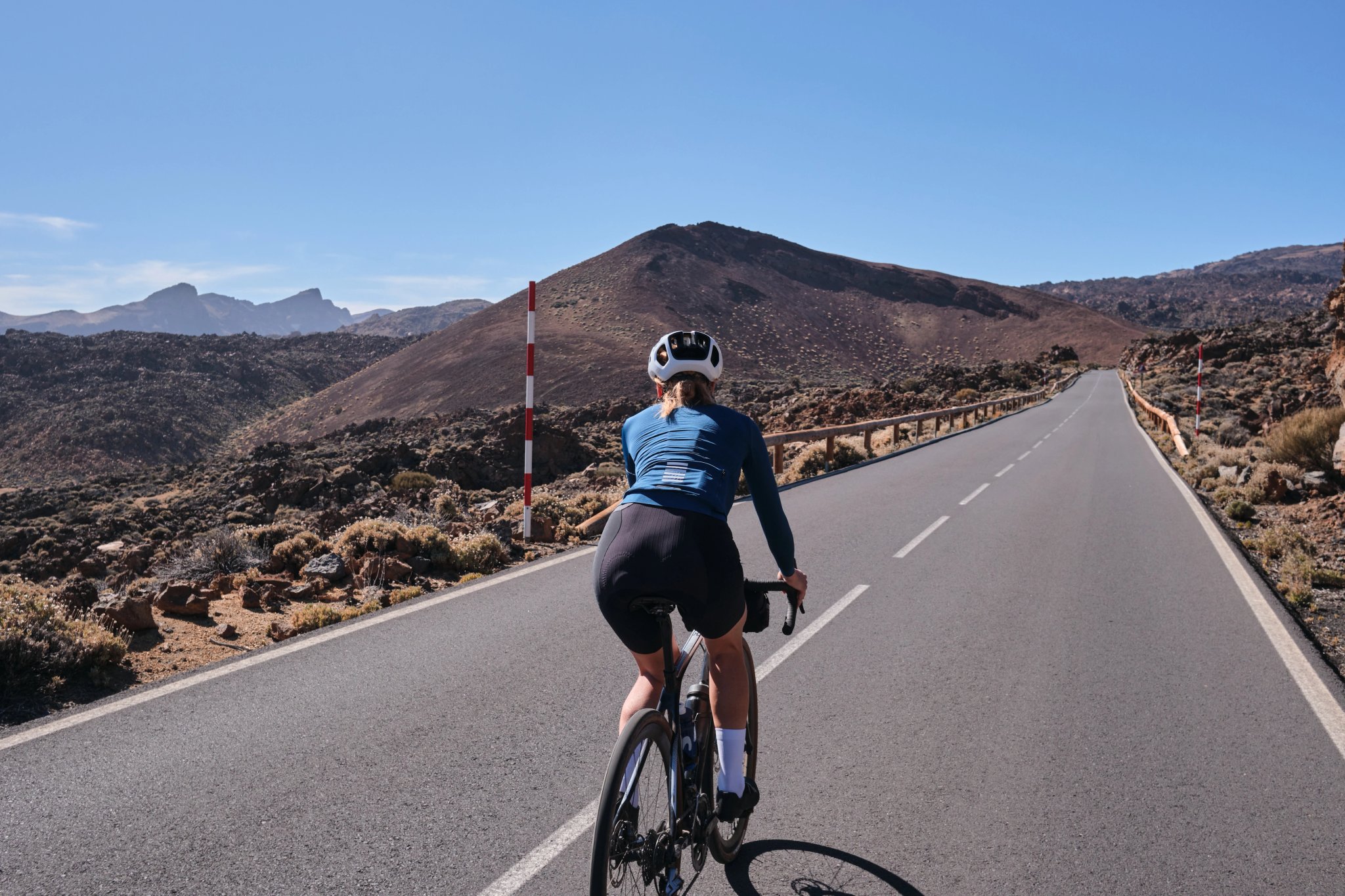
Cycling Conditions
Tenerife offers some of the most consistent and cyclist-friendly conditions in the Canary Islands, especially for riders seeking elevation or structured training.
Traffic Levels
Traffic is moderate to low once you leave the main cities and coastal zones. Popular cycling corridors, such as the Teide ascent from the south or north, are well-maintained and widely used by cyclists, which improves driver awareness.
Terrain Characteristics
Expect a mix of:
Very long climbs (up to 40–50 km when ascending Teide)
Steady gradients rarely exceeding 8–10% on main routes
Smooth tarmac, ideal for road cycling
Extensive MTB networks in the Anaga Mountains, Corona Forestal, and around Teide

Wind & Weather
Tenerife offers stable, dry weather most of the year.
The south is sunnier and drier.
The north is greener, with occasional cloud cover.
At higher elevations, temperatures drop quickly — dressing in layers is important for Teide rides.
Best Base Towns
Costa Adeje / Playa de las Américas (South Coast): The most popular base for cyclists. Excellent access to Teide climbs, coastal warm-up rides, bike rentals, and good accommodation options.
Puerto de la Cruz (North Coast): A greener and more authentic base, ideal for accessing northern Teide routes and the Anaga Mountains. Best for riders who enjoy scenic, cooler conditions.
La Laguna / Santa Cruz: An urban base near the Anaga Rural Park — perfect for MTB riders or road cyclists seeking steep, technical climbs and cooler weather.

Suggested Itinerary (Road Cycling)
Below is a 6-day road cycling itinerary showcasing Tenerife’s most iconic routes, from coastal rides to the legendary ascent of Teide.
Itinerary
Day 1: Arrival in Tenerife
Day 2: Coastal Ride and Historic Towns
Day 3: Into the Mountains – Masca Gorge
Day 4: Teide National Park – Volcano Adventure
Day 5: Rural Delights and Wineries
Day 6: Coast to Coast
Wish to experience Tenerife with all logistics taken care of? You can ride independently while we handle route planning, luggage transfers, accommodation, and on-trip support.
Check out our Tenerife road cycling tours:
Suggested Itinerary (MTB)
Tenerife is exceptional for mountain biking thanks to its rugged volcanic terrain, pine forests, high-altitude tracks, and remote rural paths.
The island offers everything from flowing singletrack to lava-rock technical sections, making it one of the most varied MTB destinations in the Canary Islands. Below is a 5-day itinerary covering Tenerife’s most iconic off-road regions.
Itinerary:
Day 1: Erjos & Teno Alto
Day 2: Santiago del Teide, Calvario & The Black Mountain Trail
Day 3: Chinyero Volcano & Volcano Area Exploration
Day 4: Santiago del Teide → Mirador del Cherfe → Masca Valley → Las Portelas
Day 5: Black Forest Exploration & Return to Santiago del Teide
Wish to explore Tenerife’s best MTB trails with everything arranged? Ride independently while we manage the logistics, accommodations, trail navigation, and support. Check out our Tenerife MTB tour:
Lanzarote
Overview
Lanzarote is the fourth-largest island in the Canary Islands, covering 845 km², which makes it significantly smaller than Tenerife and Gran Canaria but larger than La Gomera and El Hierro.
It has a population of around 156,000 people, concentrated in Arrecife, Costa Teguise, and Playa Blanca, while the inland areas remain sparsely populated.

The island’s landscape is shaped by more than 300 volcanic cones, extensive lava fields, and the protected Timanfaya National Park, giving Lanzarote one of the most distinctive cycling environments in Europe.
Despite the rugged, moon-like appearance, the island’s highest point (Peñas del Chache) reaches only 670 m, which means climbs are moderate in altitude but frequent due to continuous rolling terrain.
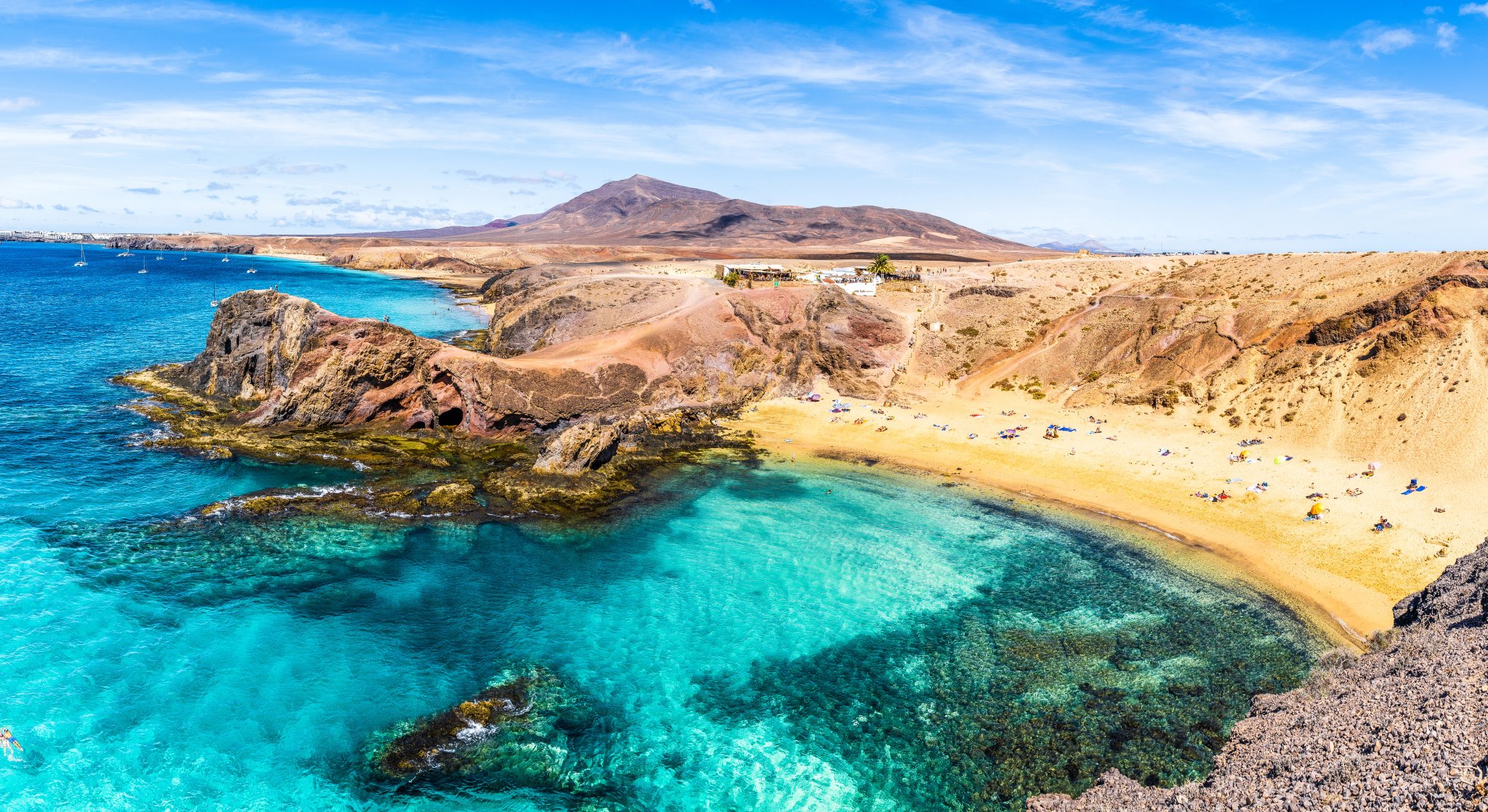
Lanzarote is also one of the windiest islands in the archipelago, influenced by steady Atlantic trade winds. These winds are a defining part of the cycling experience, providing consistent resistance that makes riding here excellent for endurance and pacing development.
The combination of:
Smooth, well-maintained roads,
Low traffic on inland routes,
Dry, stable weather, and
Open volcanic scenery,
makes Lanzarote especially popular among road cyclists and triathletes. The island is also home to the Ironman Lanzarote bike course, one of the toughest in the Ironman calendar, further reinforcing its reputation as a premier cycling destination.
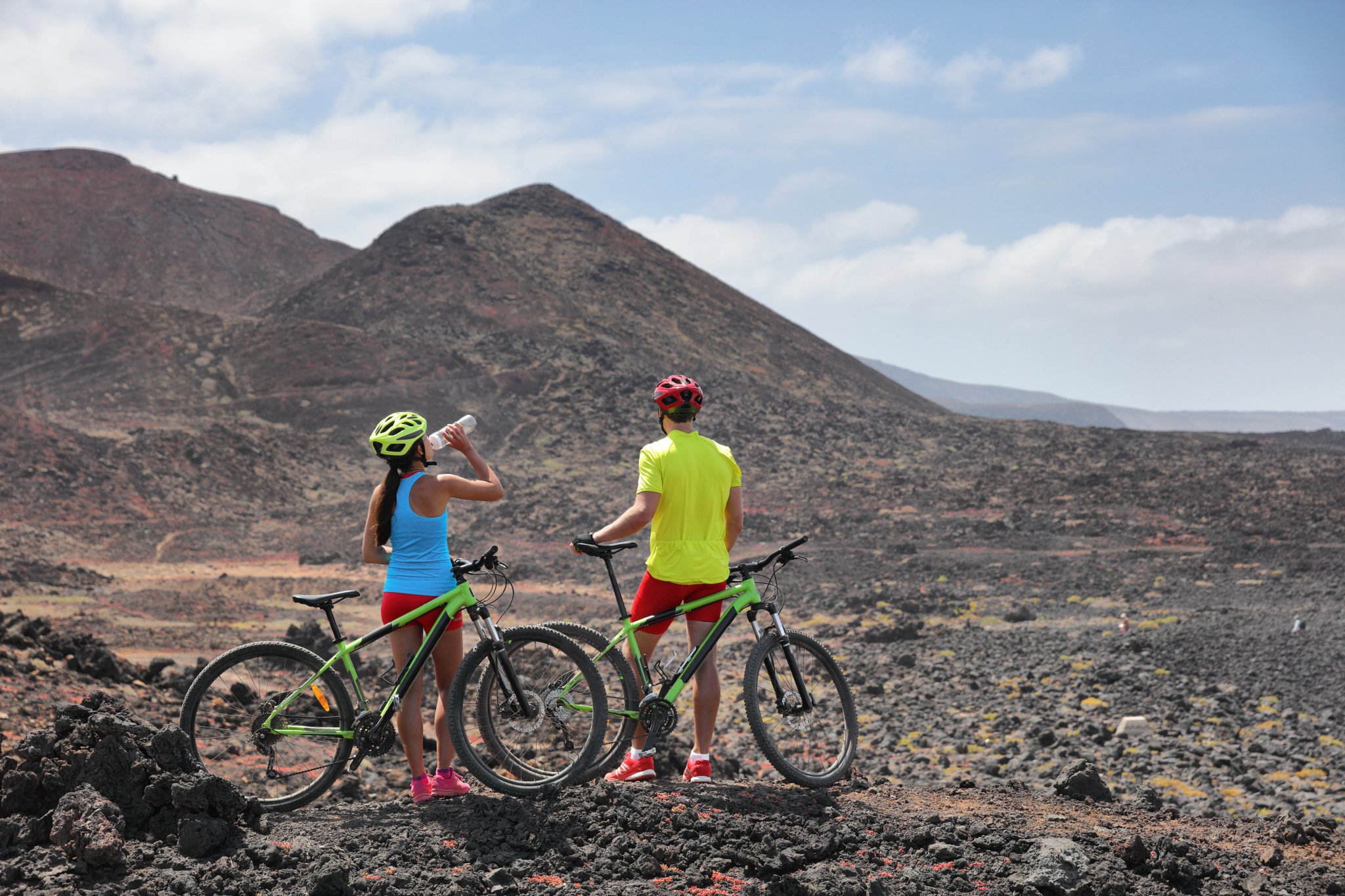
Cycling Conditions
Lanzarote is known for having some of the best road surfaces in the Canary Islands. The island invests heavily in maintaining its tarmac, partly because of its strong cycling and triathlon culture. Most primary and secondary roads used by cyclists are smooth, clean, and well-signed, making navigation straightforward.
Traffic Levels
Traffic is generally light to moderate, especially once you leave the resort areas.
The quietest cycling is found in the central and northern parts of the island, including the La Geria wine region, Teguise Plateau, and the climbs around Haría. Tourist traffic increases near Arrecife and Playa Blanca, but even these areas remain rideable with proper route planning.
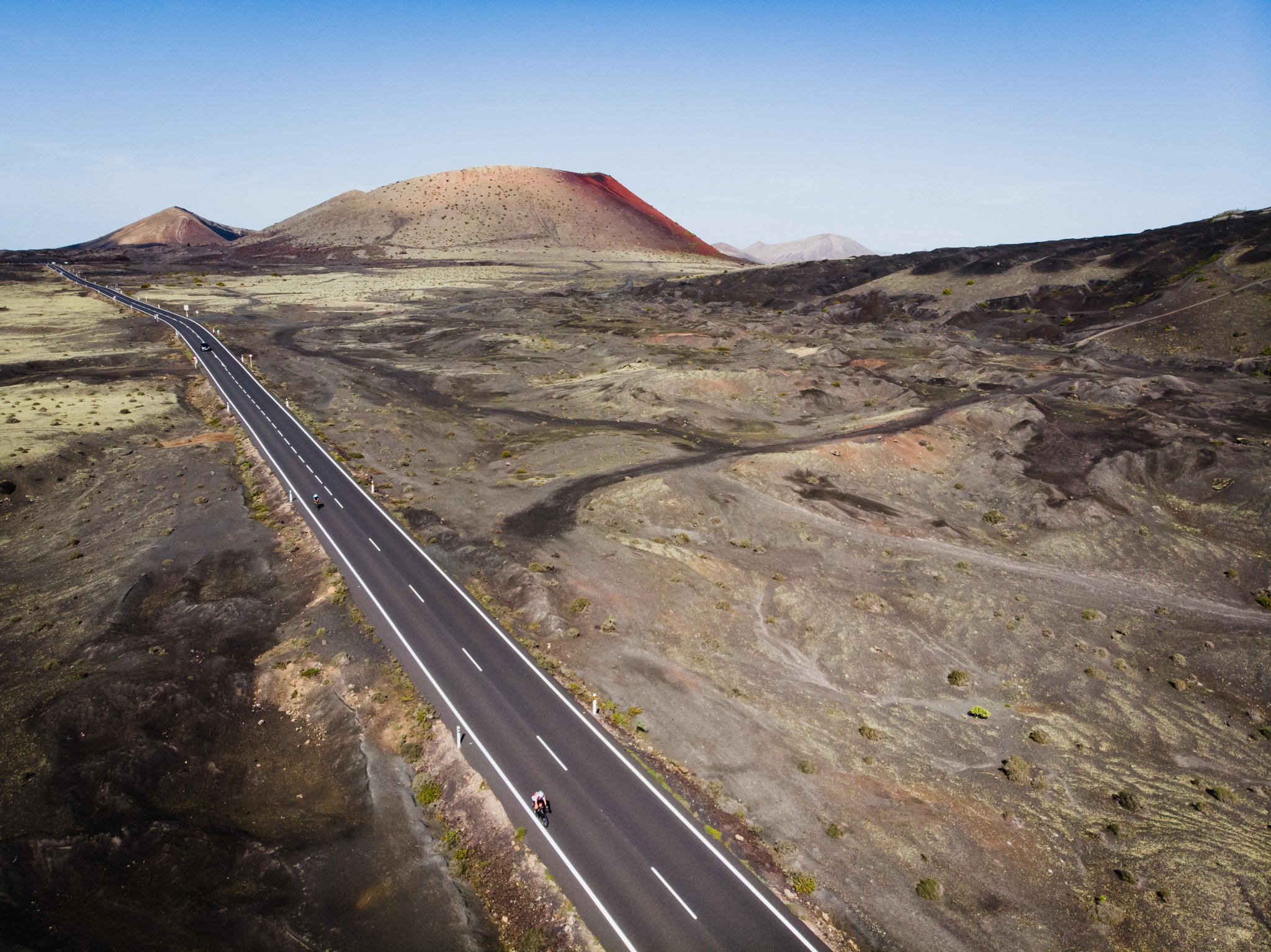
Wind Exposure
Wind is one of Lanzarote’s defining characteristics. The island experiences steady northeast trade winds, especially from spring to early autumn.
These winds can create strong crosswind sections, particularly on:
Coastal roads near Arrieta and Órzola
Open volcanic plains around Timanfaya
Long straight sections between Teguise and Costa Teguise
Terrain Characteristics
Although Lanzarote lacks high mountains, the terrain is constantly rolling.
Riders can expect:
Frequent short to medium climbs
Gradual, steady gradients
Very few flat sections outside the southern coast

Best Base Towns
Costa Teguise: A central and convenient base for cyclists. It offers quick access to northern routes, including Haría, Teguise, and Mirador del Río, and has several bike shops and rental centres. Ideal for riders who want variety without long transfers.
Playa Blanca: Located in the south, Playa Blanca is well-positioned for coastal cycling and for exploring the Timanfaya region. It is quieter than other resort areas and suited for riders looking for a relaxed atmosphere after daily rides.
Arrecife: The island’s capital is practical for logistics, being close to the airport and main roads. It’s a convenient option for shorter stays or for cyclists who want easy access to both eastern and central routes.
San Bartolomé: An inland town offering immediate access to the island’s central plateau and vineyard roads. It is a good base for cyclists who prefer minimal traffic and a more local atmosphere.
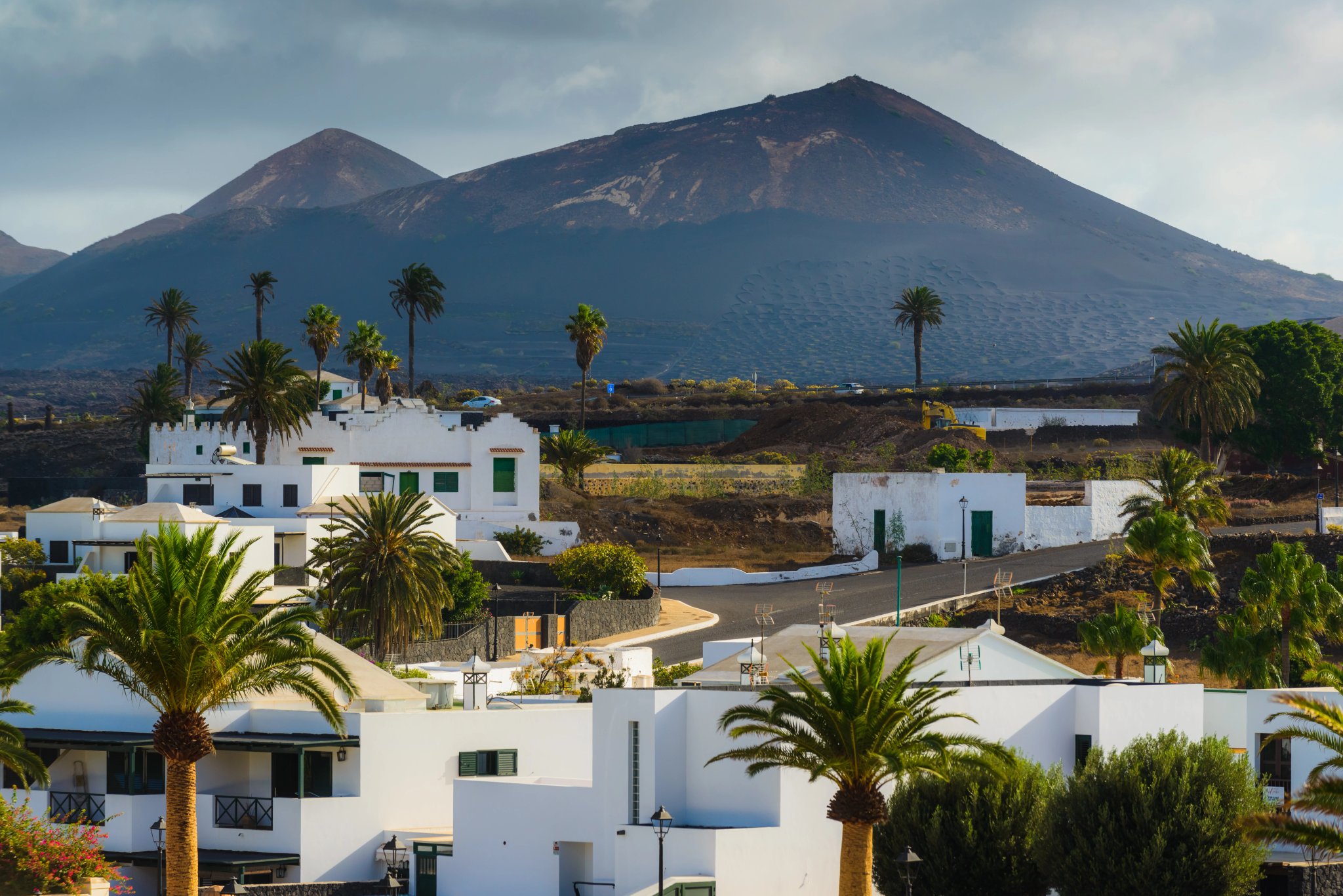
Top Things To See
Lanzarote’s volcanic landscape is filled with striking viewpoints, lava fields, coastal cliffs, and cultural sites that are easy to visit during or after your rides. Below are the key places worth exploring to complement your cycling experience.
Suggested Itinerary
Below is a sample one-week itinerary that covers Lanzarote’s key cycling regions, including its volcanic interior, northern valleys, coastal routes, and several of the island’s classic climbs.
Itinerary
Day 1: Arrival in Costa Teguise
Day 2: Costa Teguise to Haria
Day 3: Haria to San Bartolome
Day 4: San Bartolome Round Ride
Day 5: San Bartolome to Costa Blanca
Day 6: Costa Blanca Loop
Day 7: Playa Blanca to Arrecife
Day 8: Departure from Arrecife
Wish to experience Lanzarote with all logistics taken care of? You can ride independently while we manage the planning, luggage transfers, and on-trip support. Check out our tour:
What to Pack
Cycling in the Canary Islands requires preparation for changing climates, long climbs, and sunny coastal conditions. Here’s what to bring to ensure a smooth and comfortable trip:
Cycling Clothing
Lightweight short-sleeve jerseys
Bib shorts
Windproof vest or light jacket (essential for Teide, Gran Canaria highlands, and early mornings)
Arm and leg warmers
Lightweight full-finger gloves for cooler descents
Rain/wind shell (especially for Tenerife’s altitude)
Sun & Weather Protection
Sunglasses (strong UV protection recommended)
High-factor sunscreen
Lip balm with SPF
Lightweight buff or neck cover
Electrolytes for hotter days

How to Get to/from the Canary Islands
The Canary Islands are well connected to Europe with frequent flights year-round. Every main cycling island has an international airport.
Airports
Tenerife South (TFS) – main hub for international flights; closest to major cycling areas
Tenerife North (TFN) – domestic Spain & inter-island flights
Gran Canaria (LPA) – large international airport with excellent connections
Lanzarote (ACE) – international routes from most European cities
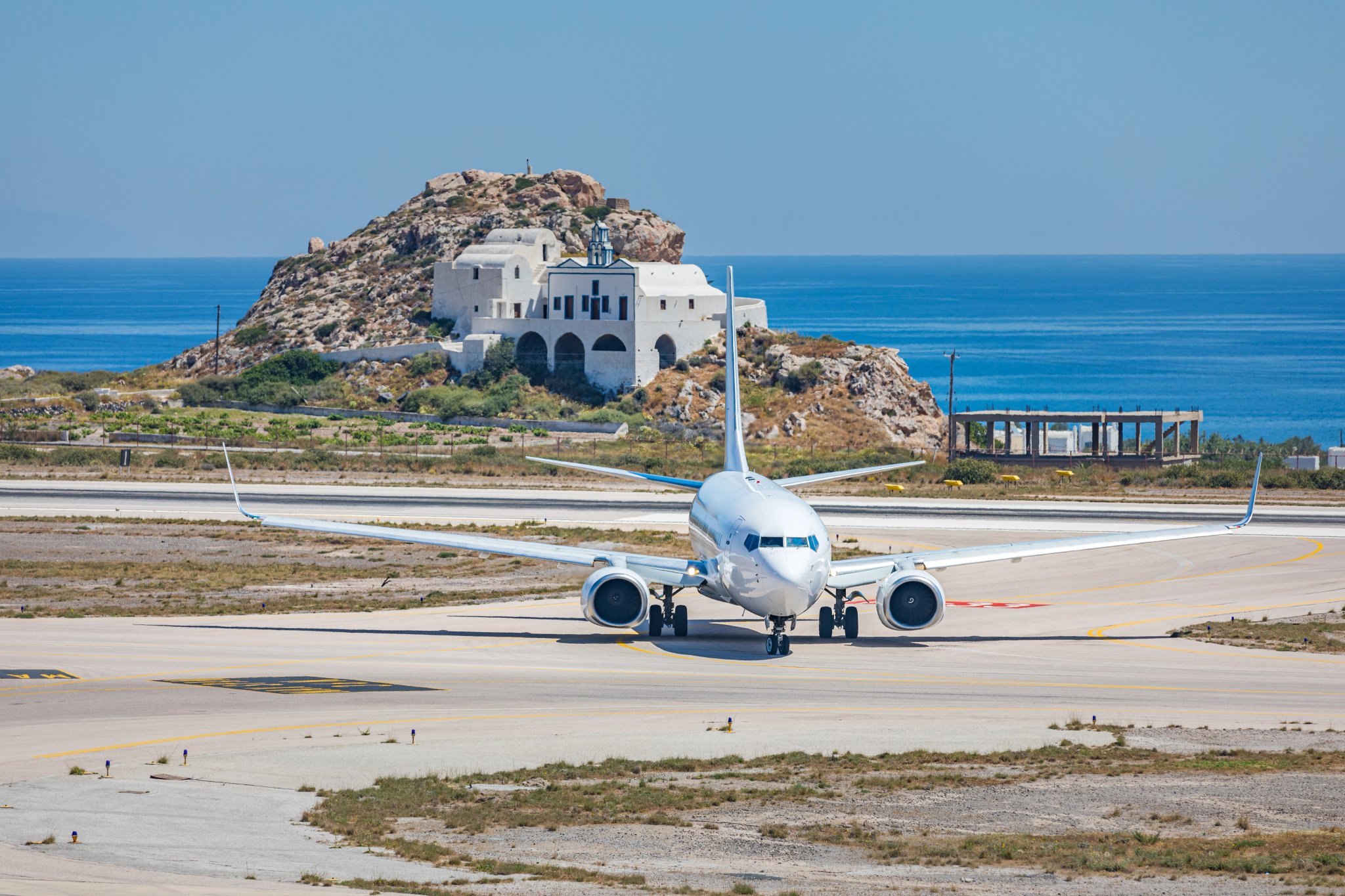
How to Get Around the Islands
By Rental Car
The most convenient way to move between bases or reach the start of routes. Roads are modern and well-maintained, and parking is generally easy outside cities.
By Bus
Each island has a good public bus network, though not all routes allow bikes. Best for short transfers or city connections.
Inter-Island Travel
If combining islands, you can take:
Flights: Fastest option (20–40 minutes between islands)
Ferries: Frequent routes between Tenerife ↔ Gran Canaria ↔ Lanzarote
A cycling trip in the Canary Islands is incredibly rewarding — but planning routes, luggage transfers, accommodation, bike logistics, and navigation can be time-consuming. That’s where we come in.

3 Best Cycling Tours
Our cycling tours are designed to remove all the stress from your trip so you can focus on riding. Here are our favorite ones:
These are just our top 3 tours, however there's more to explore in the or wider Spain.
We provide everything you need and more, including:
Handcrafted routes tested on the ground
Daily GPS tracks
Luggage transfers between accommodations
Pre-booked hotels in cyclist-friendly locations
Local support throughout your trip
Optional bike rental and emergency assistance
Clear daily briefings and practical tips
Start Planning Your Trip!
Whether you’re cycling in Lanzarote, Gran Canaria, or Tenerife, you ride at your own pace while we handle the logistics behind the scenes.
Not sure where to go? We’re here for you - simply reach out to us and our cycling expert will advise you on the best tour for you preferences and schedule.
See you in the Canary Islands!

Hassle-Free
We handle itineraries, accommodations, and anything else you prefer not to deal with, so you can enjoy a carefree holiday.

Completely Customizable
Flexibility is our middle name — whether you want more or less, or just beyond ordinary, we’ll make it happen.

Book with confidence
We are a financially protected company, fully bonded and insured, keeping your money safe and allowing you to travel with confidence.

Unbeatable support
Our 24/7 customer support is where we show our passion, bringing you a better experience by making your well-being our number one priority.
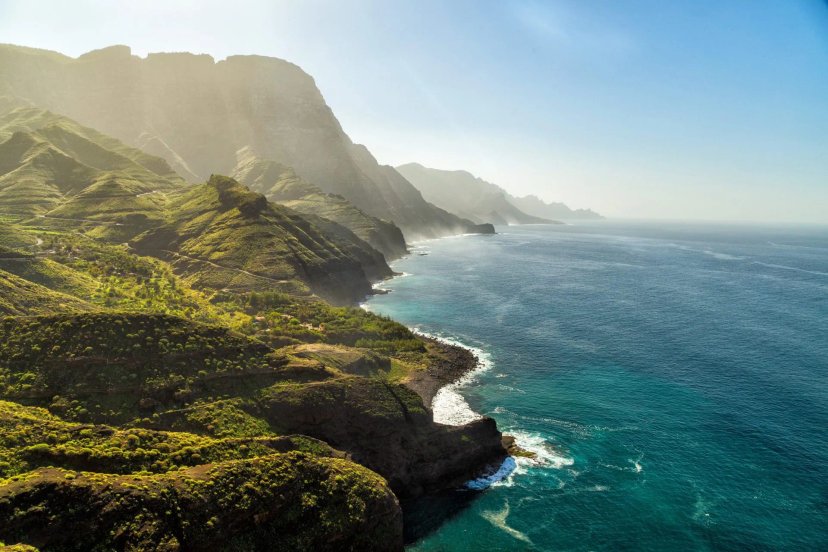
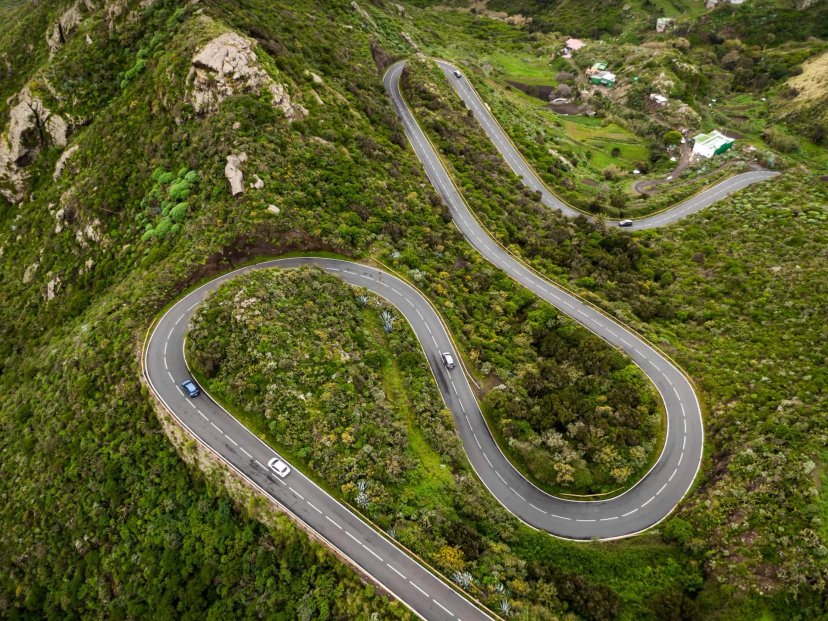
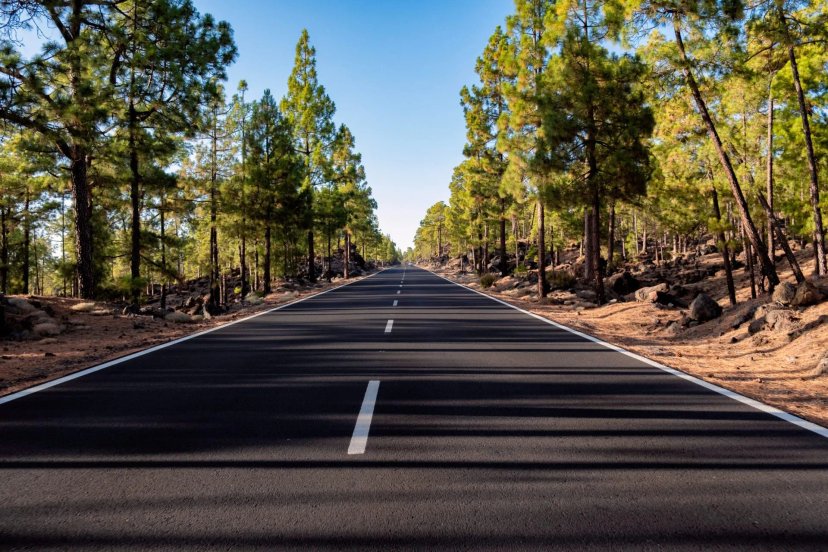


.jpg&w=3840&q=75)



